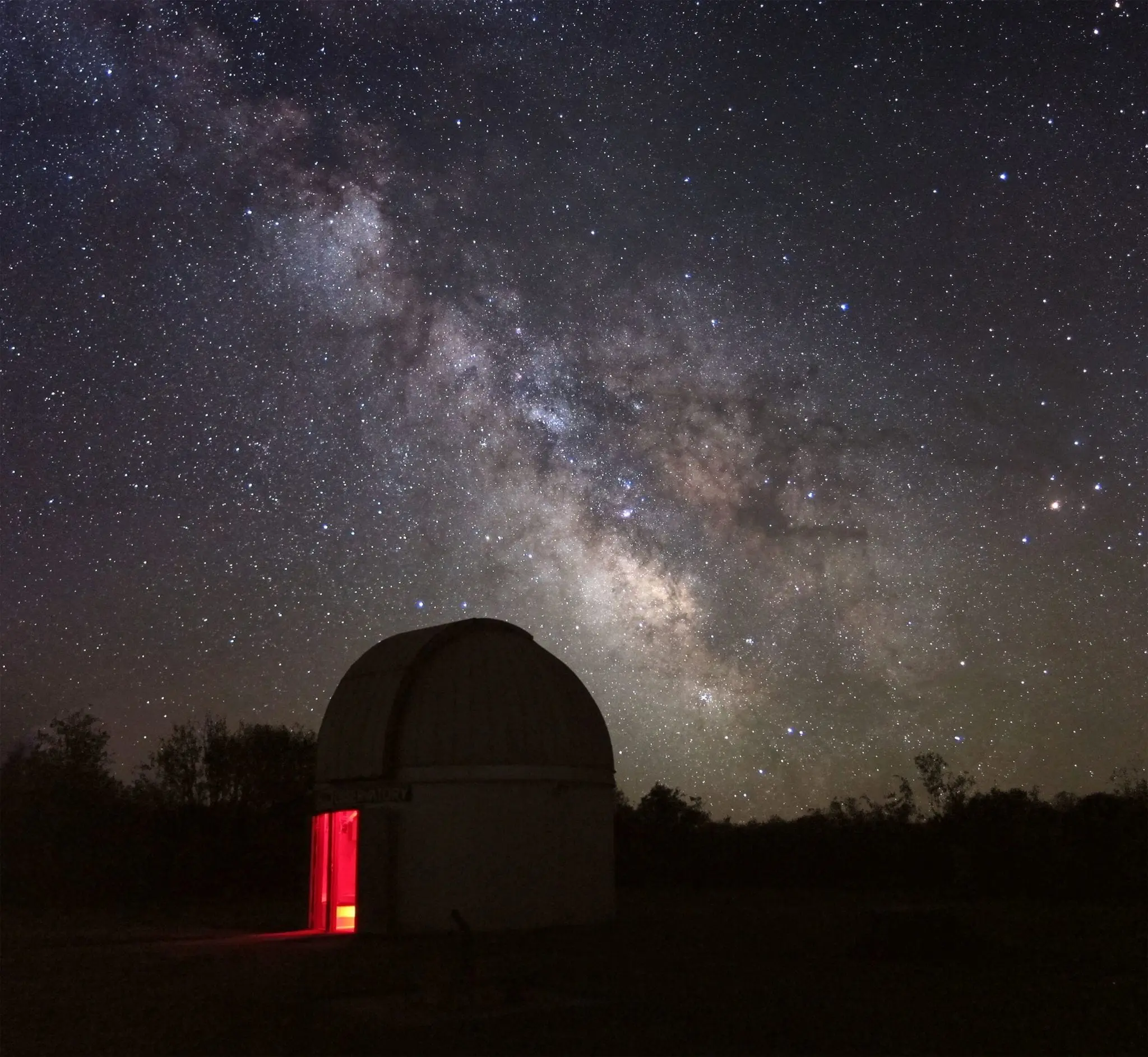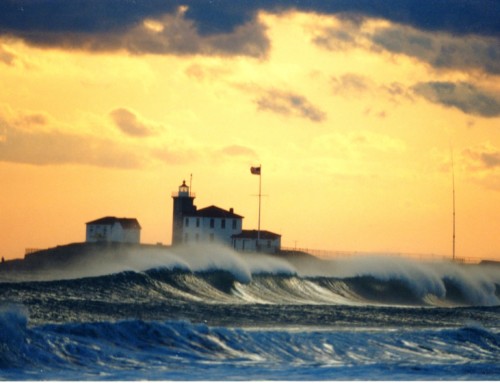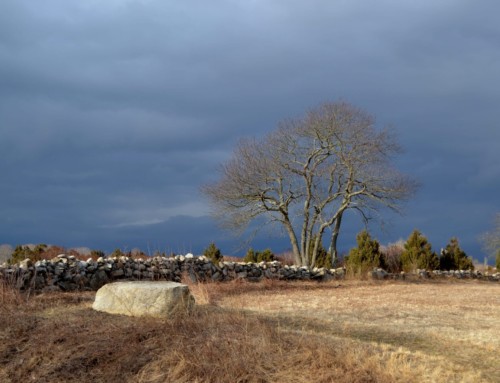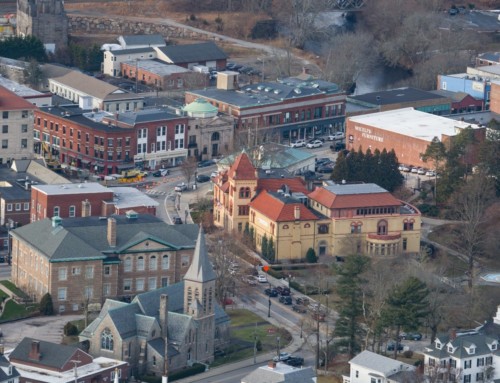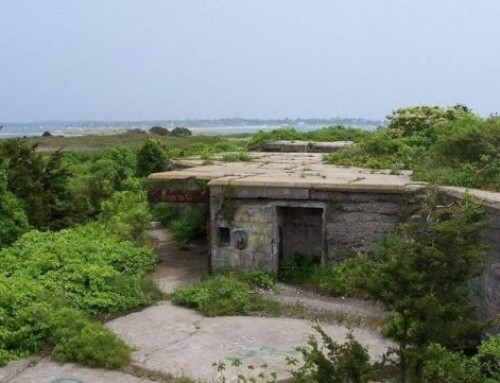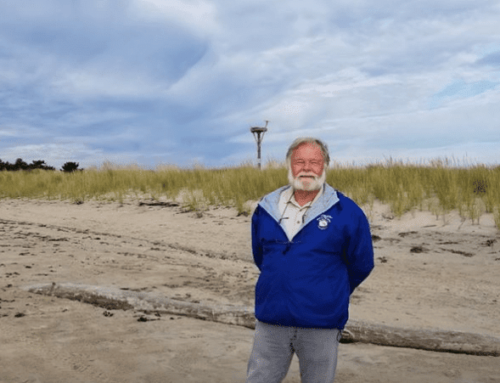If you’re seeking something educational, enlightening, and entertaining to do on a Friday night, look no further than the Frosty Drew Observatory in Charlestown, where you can look far out into the universe and gain a new perspective on things, literally and figuratively.
The Frosty Drew Observatory and Science Center was first conceived of in the mid 1970s as a nature center, a gateway to the also newly established Ninigret National Wildlife Refuge, and a memorial to Edwin F. “Frosty” Drew, who was a gifted environmental activist during his short 28 years on earth. The Frosty Drew Nature Center was opened to the public in 1983, with the Observatory being added in 1988, and the John G. Drew Sky Theatre opening in 2010.
The Center is handicapped accessible and made up of rooms to host exhibits, meetings, and classes, a library, a memorial garden. The Observatory allows astronomers and visitors to observe the rings of Saturn, the Galilean moons of Jupiter, Lunar geography, star clusters, nebulae, galaxies, and thousands of astronomical objects, including 80,000 deep-space objects and over 200,000,000 stars. It exists and thrives thanks to generous support of local nonprofit organizations and dedicated volunteers.
Scott MacNeill has served as the Observatory Director for the last six years, and has worked with the organization for a total of ten. Always science-minded and armed with a background in engineering, Scott began hanging out with astronomers at different observatories in the early 2000s and found his way to Frosty Drew circa 2005 and eventually became such a fixture that he was asked to consider joining them as the Associate Observatory Director in 2009. In this role and in his current one, Scott works to supervise the astronomy team, oversee the technology, and manage the execution of their programming.
“We’ve evolved dramatically,” Scott reflected. The observatory has always been focused on public outreach, but it was more academically based when it initially opened and was being run by its first director, URI Astronomy professor Dr. Bill Penhallow. Over time, the programming has grown immensely and the observatory has transformed into a destination for tourists and the general public alike. “We have multiple telescopes, numerous astronomers, and many different presenters and live projections on any given night,” Scott explained. “We want to engage everybody. We challenge ourselves to explain everything in plain language and to ensure that visitors are part of the conversation instead of just being spoken at. We want people to feel like they can come and understand what we’re doing and feel part of the program.” This approach has been paying off, with some nights seeing as many as 700 visitors come through to witness the wonder of the universe.
Frosty Drew Observatory is open every Friday night, year round. “Astronomers in New England have to be adaptable, because of the weather and the changing seasons, so these factors play an important role in how we execute a night’s events,” Scott shared. “If it’s fully cloudy, we won’t open the telescope, but we’ll have presentations inside using the data and images we’ve captured, and nights like these give visitors a chance to have more one-on-one time with the astronomers and gear-heads a chance to check out our equipment.”
Scott has worked to add additional open nights, which was an experiment that began last summer and saw success. Beginning in 2020, they’ll be ramping up and introducing new nights, with the ultimate goal of being open five days and nights a week.
Some special upcoming events include a Halloween stargazing night on October 25th, when the Observatory will be decorated in all its best and spookiest finery and kids are encouraged to come dressed in costume, and the Transit of Mercury on November 11th, which is a great daytime celestial event that happens to fall on Veteran’s Day this year so kids will have it off from school.
In the summer, Frosty Drew takes advantage of the conditions to “Celebrate the Milky Way” once per month. “We’re known as the darkest site in Southern New England, and we’ve been listed as the most acceptable spot in all of New England to observe the Milky Way,” Scott explained. “Viewing the Milky Way is on many peoples’ bucket lists, so we look ahead and try to pick the Saturday night that will give visitors the best view of it.”
The future of Frosty Drew Observatory is quite literally written in the stars, and with a wonderful group of people manning the telescopes and working to bring the wonders of the universe to visitors, it feels pretty safe to say that the future looks bright.
